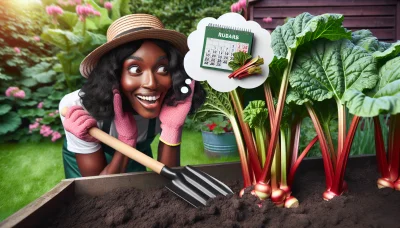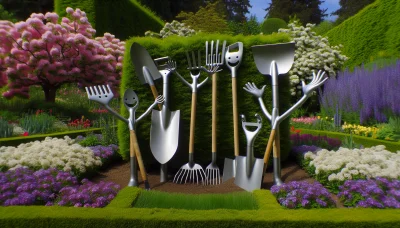Growing strawberries from seeds Quiz
Test Your Knowledge
Question of
Growing Strawberries from Seeds: A Comprehensive Guide
Growing strawberries from seeds can be a wonderfully rewarding gardening project. It allows gardeners to experience the full cycle of plant growth, from the tiny seed to the sweet, ripe fruit. While it requires patience, as strawberries grown from seed can take more time to produce fruit than those grown from runners, the process is incredibly satisfying. Starting strawberries from seeds offers a wider variety of choices, as there are many unique and heirloom varieties that are only available in seed form. Additionally, growing your own strawberries can be cost-effective and ensures that you know exactly what goes into the growing process, making it a healthier option. Whether you're a seasoned gardener or a novice looking to try something new, growing strawberries from seeds is a project that can bring a lot of joy and delicious rewards.
Benefits of Growing Strawberries from Seeds
- Cost-effectiveness: Growing strawberries from seeds is more affordable than purchasing seedlings or mature plants.
- Variety selection: Starting from seeds allows you to choose from a wider range of strawberry varieties, including rare or heirloom types.
- Satisfaction of growing plants from the very beginning: There is a unique sense of accomplishment in nurturing a plant from seed to fruit.
Step-by-Step Guide to Growing Strawberries from Seeds
- Select high-quality strawberry seeds from a reputable source.
- Prepare a small container with well-draining seed starting mix.
- Sow the strawberry seeds on the surface of the soil, ensuring they are spaced out evenly.
- Cover the seeds lightly with a thin layer of soil or vermiculite.
- Moisten the soil using a spray bottle to avoid displacing the seeds.
- Cover the container with a clear plastic lid or plastic wrap to maintain humidity.
- Place the container in a warm, bright location but out of direct sunlight.
- Keep the soil consistently moist but not waterlogged.
- Watch for germination, which can take 2-3 weeks, and remove the plastic cover once seeds sprout.
- Once seedlings develop their true leaves, transplant them into individual pots.
- Gradually acclimate the seedlings to outdoor conditions over a week before planting outside.
- Plant the strawberry seedlings in a sunny spot with rich, well-draining soil.
- Space the plants about 12 inches apart in rows that are 2 feet apart.
- Water the strawberries regularly to keep the soil moist but not soggy.
- Monitor for pests and diseases and take appropriate action as needed.
Caring for Your Strawberry Plants
Strawberry plants require attentive care to thrive and produce abundant fruit. A critical aspect of their care is proper watering. They prefer moist, but not waterlogged, soil. It's important to water them early in the day so the leaves have time to dry, reducing the risk of fungal diseases. Fertilizing is another key component; a balanced, all-purpose fertilizer applied in the early spring and again in late summer can promote healthy growth and fruit production. Lastly, protecting your strawberry plants from pests and diseases is crucial. Regular inspections for signs of pests, such as aphids and slugs, and diseases like powdery mildew, and taking prompt action can help keep your plants healthy and productive. Implementing these care tips can significantly improve the health and yield of your strawberry plants.
Common Challenges in Growing Strawberries from Seeds
- Poor Germination Rates: Ensure seeds are fresh and use a germination mat to maintain optimal soil temperature.
- Diseases: Practice crop rotation and use disease-resistant seed varieties to minimize risk.
- Pests: Employ natural predators like ladybugs, and use row covers to protect plants.
Harvesting and Enjoying Your Strawberries
Knowing when your strawberries are ready to harvest is key to enjoying the sweetest, most flavorful fruits. Look for berries that are fully red, with no white or green areas, as these are indicators they have ripened on the plant. The best time to pick them is in the late morning, after the dew has evaporated but before the day heats up. Gently twist the berries off the plant to avoid bruising them. For storing, keep your strawberries in the refrigerator and wash them only right before you're ready to eat or use them. This helps in preventing them from becoming soggy and spoiled. Strawberries can also be frozen for longer storage, making them a versatile fruit to enjoy in various recipes or as a delicious snack on their own.












